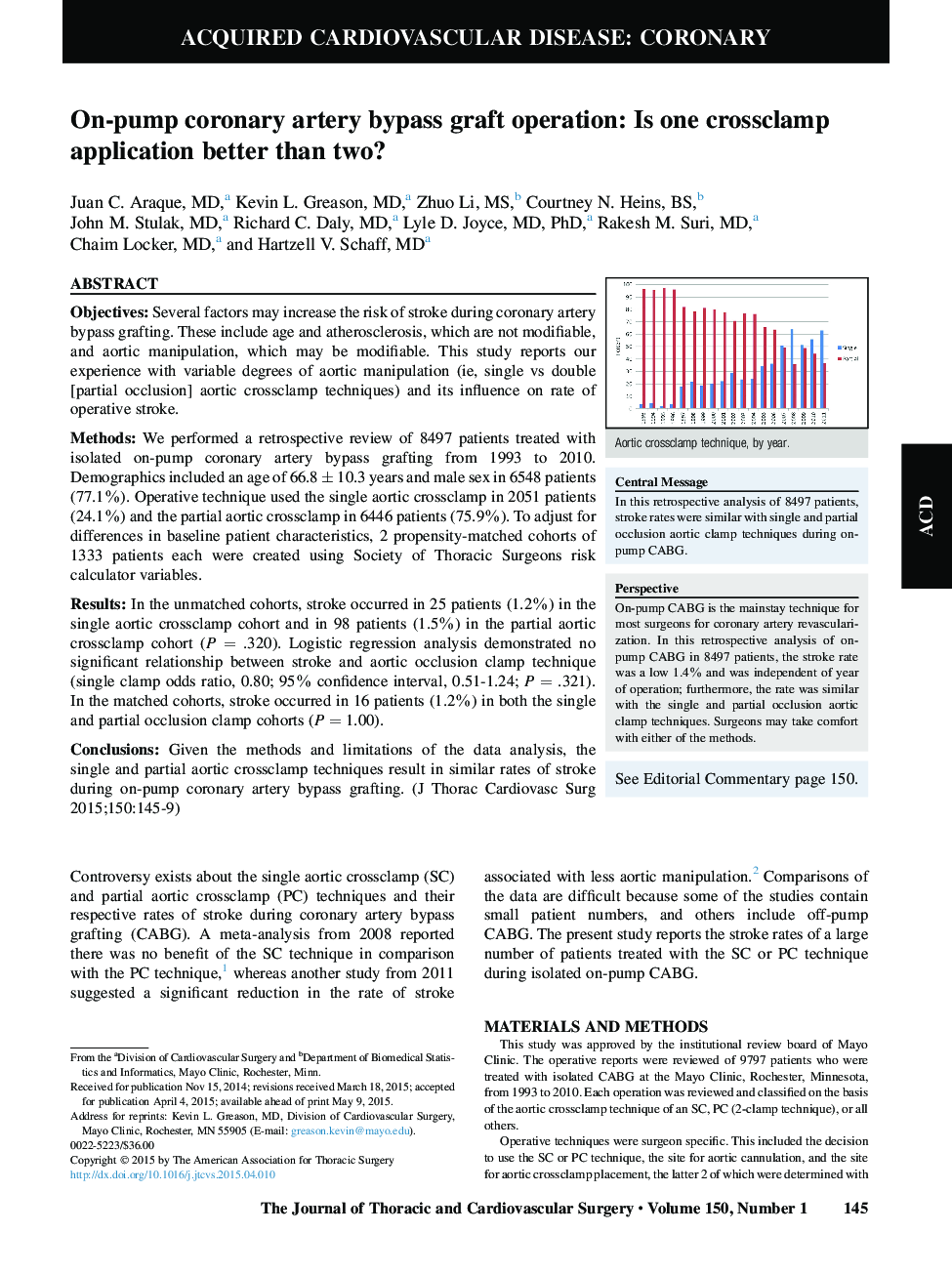| Article ID | Journal | Published Year | Pages | File Type |
|---|---|---|---|---|
| 2979154 | The Journal of Thoracic and Cardiovascular Surgery | 2015 | 5 Pages |
ObjectivesSeveral factors may increase the risk of stroke during coronary artery bypass grafting. These include age and atherosclerosis, which are not modifiable, and aortic manipulation, which may be modifiable. This study reports our experience with variable degrees of aortic manipulation (ie, single vs double [partial occlusion] aortic crossclamp techniques) and its influence on rate of operative stroke.MethodsWe performed a retrospective review of 8497 patients treated with isolated on-pump coronary artery bypass grafting from 1993 to 2010. Demographics included an age of 66.8 ± 10.3 years and male sex in 6548 patients (77.1%). Operative technique used the single aortic crossclamp in 2051 patients (24.1%) and the partial aortic crossclamp in 6446 patients (75.9%). To adjust for differences in baseline patient characteristics, 2 propensity-matched cohorts of 1333 patients each were created using Society of Thoracic Surgeons risk calculator variables.ResultsIn the unmatched cohorts, stroke occurred in 25 patients (1.2%) in the single aortic crossclamp cohort and in 98 patients (1.5%) in the partial aortic crossclamp cohort (P = .320). Logistic regression analysis demonstrated no significant relationship between stroke and aortic occlusion clamp technique (single clamp odds ratio, 0.80; 95% confidence interval, 0.51-1.24; P = .321). In the matched cohorts, stroke occurred in 16 patients (1.2%) in both the single and partial occlusion clamp cohorts (P = 1.00).ConclusionsGiven the methods and limitations of the data analysis, the single and partial aortic crossclamp techniques result in similar rates of stroke during on-pump coronary artery bypass grafting.
